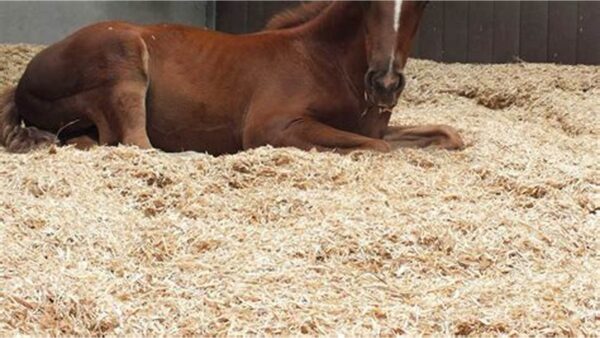Introduction: The Impact of Pine Wood Shavings on Air Quality in Animal Stalls
Maintaining good air quality in animal stalls is crucial for the health and well-being of both animals and their caretakers. Pine wood shavings have gained popularity as a bedding material in animal stalls due to their numerous benefits, including their positive impact on air quality. This article explores how pine wood shavings contribute to a healthier and cleaner environment in animal stalls by reducing dust, controlling odors, and improving ventilation.
1. The Role of Pine Wood Shavings in Reducing Dust
Dust in animal stalls can pose significant health risks for both animals and humans. Pine wood shavings offer several advantages in controlling dust levels:
A. Lower Dust Emission
Unlike some other bedding materials, pine wood shavings have a relatively low dust content. This characteristic helps minimize airborne dust particles, which can irritate the respiratory systems of animals and people alike. By reducing dust, pine wood shavings contribute to a cleaner and healthier environment in the stall.
B. Moisture Absorption
The high absorbency of pine wood shavings means they effectively manage moisture levels in the stall. Excess moisture from urine is absorbed by the shavings, preventing the formation of dust and reducing the overall dust load in the environment. A drier stall environment further decreases dust generation.
C. Reduced Respiratory Issues
By minimizing dust levels, pine wood shavings help reduce the risk of respiratory problems in animals, such as coughing, nasal discharge, and allergies. This benefit is particularly important for animals with pre-existing respiratory conditions or sensitivities.
2. Odor Control and Its Effect on Air Quality
Odor control is another critical aspect of maintaining good air quality in animal stalls. Pine wood shavings are effective in managing odors for several reasons:
A. Natural Odor Absorption
Pine wood shavings have natural odor-absorbing properties due to their high absorbency and the presence of natural resins in pine. These properties help neutralize and control ammonia and other unpleasant odors that can accumulate in animal stalls.
B. Reduced Bacterial Growth
The absorbent nature of pine wood shavings helps control the moisture level in the stall. Lower moisture levels inhibit the growth of bacteria and fungi that contribute to foul odors. By reducing bacterial growth, pine wood shavings further improve the overall air quality in the stall.
C. Fresher Stall Environment
A reduction in odors contributes to a fresher and more pleasant environment for both animals and caretakers. A cleaner-smelling stall improves the overall well-being of the animals and makes the work environment more enjoyable for stable staff.
3. Enhancing Ventilation with Pine Wood Shavings
Proper ventilation is essential for maintaining good air quality in animal stalls. Pine wood shavings can play a role in enhancing ventilation:
A. Improved Airflow
The loose, fluffy texture of pine wood shavings allows for better airflow compared to denser bedding materials. Improved airflow helps disperse airborne contaminants and maintain a well-ventilated stall environment.
B. Reduced Stall Temperature
By absorbing moisture and allowing for better air circulation, pine wood shavings can help regulate the temperature inside the stall. Cooler and well-ventilated stalls contribute to a more comfortable environment for animals, reducing heat stress and promoting overall health.
C. Easier to Manage and Maintain
Pine wood shavings are easy to manage and maintain, which supports good ventilation practices. Regular cleaning and spot-checking of the bedding ensure that moisture and waste are promptly removed, preventing the buildup of odors and maintaining a healthier air quality.
4. Best Practices for Using Pine Wood Shavings to Improve Air Quality
To maximize the benefits of pine wood shavings for air quality in animal stalls, consider the following best practices:
A. Use the Right Amount of Bedding
Ensure that the bedding depth is adequate to provide comfort and absorbency without excessive buildup. A depth of 4-6 inches is generally effective for maintaining air quality and controlling moisture.

B. Implement a Regular Cleaning Schedule
Regular cleaning and spot-removal of soiled bedding are essential for maintaining good air quality. Remove soiled shavings and replace them with fresh material to prevent the accumulation of moisture and odors.
C. Maintain Proper Ventilation
Ensure that stalls are well-ventilated to support airflow and minimize the buildup of airborne contaminants. Good ventilation practices, such as using fans or opening windows, complement the benefits of pine wood shavings.
D. Store Shavings Properly
Store pine wood shavings in a dry, covered area to prevent moisture absorption before use. Proper storage helps maintain the quality of the shavings and ensures their effectiveness in improving air quality.
5. Conclusion: The Benefits of Pine Wood Shavings for Air Quality
Incorporating pine wood shavings into animal stalls offers several benefits for air quality, including reduced dust levels, effective odor control, and enhanced ventilation. By choosing pine wood shavings, stable managers can create a healthier and more comfortable environment for animals while also improving the working conditions for caretakers. Proper use and maintenance of pine wood shavings ensure that their air quality benefits are fully realized, contributing to the overall well-being of the animals and the efficiency of the stable operations.
